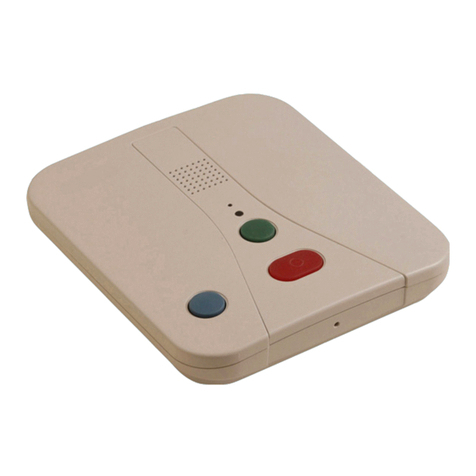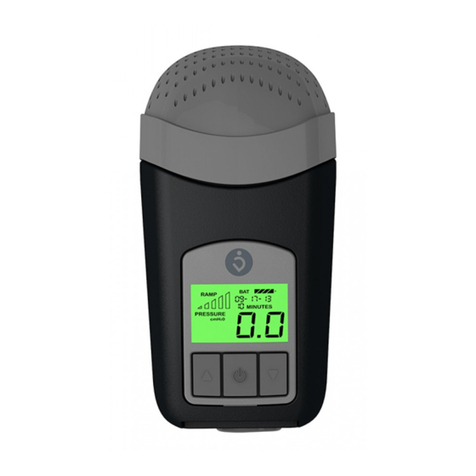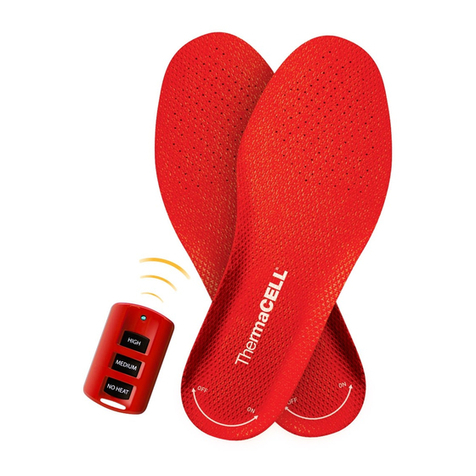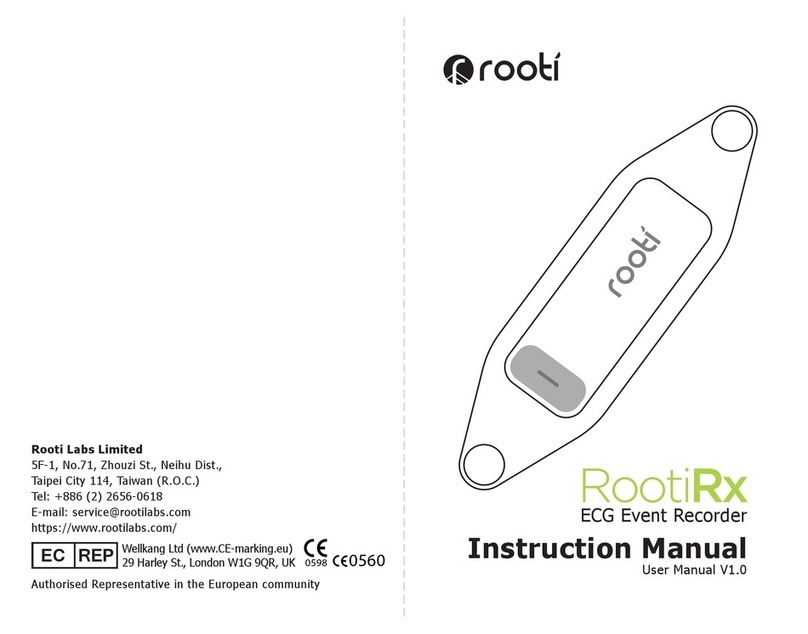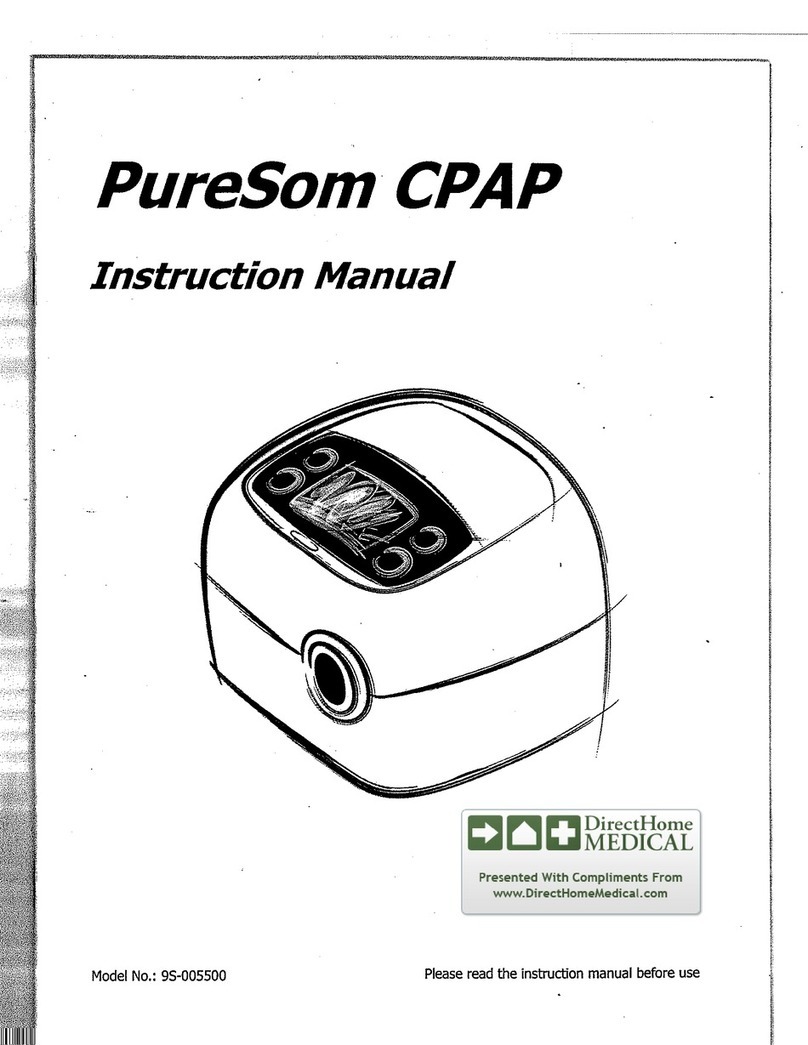Starkey Destiny 1600 User manual

ITE
OPERATIONS MANUAL
In-The-Ear
1600

Congratulations!
Your new Destiny hearing system uses advanced
digital features to provide improved sound quality,
speech understanding and listening comfort.
Starkey Laboratories, Inc., a global hearing
instrument manufacturer, is a worldwide provider of
comprehensive digital hearing solutions. Founded
in 1967, Starkey operates facilities in more than
25 countries and is a recognized world leader in
the design and development of innovative hearing
solutions. Starkey focuses on connecting people
with people. This philosophy is at the center of
everything we do. Our ultimate goal is to provide
you the best listening experience possible.
Please read this manual carefully to take full
advantage of all features on your new hearing
system. If you have any questions, please contact
your hearing care professional.

1
Overview
Features, Controls and Identification ...........2
Preparation
Batteries .................................4
Battery Indicator Tones . . . . . . . . . . . . . . . . . . . . . 6
Insertion and Removal . . . . . . . . . . . . . . . . . . . . . . 8
Operation
On, Off and Volume Levels . . . . . . . . . . . . . . . . . . 10
On, Off with Volume Control . . . . . . . . . . . . . . . . . 11
Multimemory Settings . . . . . . . . . . . . . . . . . . . . . . 13
Directional Settings ........................15
Telephone Use ............................17
SelfCheck ...............................21
Reminder................................23
SummaryofSettings .......................24
Hearing System Care
InstrumentCare...........................26
ServiceandRepair.........................28
Troubleshooting Guide . . . . . . . . . . . . . . . . . . . . . 29
Tips for Better Communication
For You ..................................30
For Your Family and Friends..................31
FDA Information
Required Information .......................32
Table of Contents

2
Features, Controls and Identification
Your hearing system controls include:
1. Microphone opening(s)
2. Battery compartment (on/off control)
3. Vent (optional)
4. Receiver opening
Your hearing system can be identified by:
5. Location of serial number
(Red Right/Blue Left)
Overview

3
Overview
1
2
3
4
0
0
-
0
0
0
0
0
0
0
0
5
Multimemory
Button (Optional)
Volume Control
(Optional)

4
Batteries
Your hearing system
uses either a size 13
or 312 battery as its
power source. This
battery size can be
identified by the
orange (13) or brown
(312) color code on
the packaging.
Preparation
To insert or replace
the battery:
1. Use the nail grip on the battery door.
2. Open the battery door gently and remove
the old battery.
3. Remove the tab from the new battery.
4. Line up the battery’s “+” sign (flat side of the
battery) with the “+” on the battery door.
5. Close the battery door.

5
1 2
3 4
5
Preparation

6
Battery Indicator Tones
A tone will sound when the battery voltage is low.
You have approximately 20 minutes* to replace the
battery. A different tone lasting two seconds will
sound just before the battery stops working.
* Actual time between low battery indicator and shut
down will vary depending on environmental noise levels
and brand of battery used.
Helpful Hints
• NEVERFORCETHEDOORSHUT;thiscould
resultinseriousdamage;ifthedoorwillnot
close securely, check that the battery is
inserted correctly
• Donotopenthebatterydoortoofarordamage
is likely to occur
• Becauseoftheirsize,it’sagoodideato
change and replace batteries above a table
or desk to reduce the risk of dropping the
instrument or battery
• Disposeofusedbatteriesimmediatelyinthe
proper waste or recycling container
Preparation

7
• Becausebatteriescanvaryinsizeand
performance, your hearing care professional
is your best source for lifespan estimates and
verification that you are using the proper size
and type
Warnings
Batteries are dangerous if swallowed. To help
prevent the accidental ingestion of batteries:
Keep out of reach of children and pets
Check your medications before taking them –
batteries have been mistaken for pills
Neverputbatteriesinyourmouth,astheycan
easily be swallowed
NationalButtonBatteryIngestionHotline:
202-625-3333
Preparation

8
Insertion and Removal
To insert the hearing instrument:
1. Holdtheinstrumentwithyourthumband
forefinger on the outer edges of the case.
2. Tilt your hand slightly forward and gently
insert the canal tip of the instrument into your
ear canal and rotate the instrument backwards.
Softly press the instrument into place with
your fingertip.
Preparation
1 2

9
To remove the hearing instrument:
Grasp the instrument with your thumb and
forenger;gentlyrotateitasyoupulloutward.
Helpful Hints
• Minorirritationandinammationmayoccur
as your ear becomes accustomed to having an
objectinit;ifso,pleasecontactyourhearing
care professional
• Ifanactualallergicreactionoccurs,alternative
materialsareavailable;contactyourhearing
care professional
• Severeswelling,dischargefromtheear,
excessive wax, or other unusual conditions
warrant immediate consultation with a physician
Preparation

10
Operation
On, Off and Volume Levels
To turn ON:
Insert a battery and completely close the
battery door.
To turn OFF:
Open the battery door until the battery is no longer
touching the battery contacts.
Your hearing system has
been set to a specific
volume level by your
hearing care professional.
If sounds are generally
too loud or too soft,
please contact your
hearing care professional
for advice and adjustment.
My hearing instrument has no volume control.
Please read the section below.
My hearing instrument has a volume control.
Please skip to the section labled “On, Off
with Volume Control.”

11
On, Off with
Volume Control
To turn the instrument
“on,” use your fingertip
to rotate the volume
control forward, toward
your face.
You should feel it “click”
on if the instrument was correctly turned off. To
make sounds louder, continue to rotate the control
forward, toward your face. Your hearing instruments
may be programmed to “beep” when you reach
the correct setting.
To make sounds softer,
use your fingertip to
rotate the control toward
the back of your head.
To turn the instrument
“off,” rotate the control
further backwards, until
you feel it “click” and the
control no longer turns.
Operation
ON OR VOLUME
INCREASE
ON OR VOLUME
INCREASE
DECREASE VOLUME
OR OFF
DECREASE VOLUME
OR OFF

12
Some hearing instruments are programmed to
have a power on delay. Your hearing professional
will place a check in the box below if your hearing
instruments have this feature.
The power on delay means that your instruments
will take several seconds to power up once they
have been turned on. This feature allows you to
get the hearing instruments in your ear before they
start to amplify sound.
Your hearing system has been set to a specific
volume level by your hearing care professional.
If sounds are generally too loud or too soft, please
contact your hearing care professional for advice
and adjustment.
Operation
My hearing instrument has a power on delay

13
Multimemory Settings
Your hearing care professional
can set up to four hearing
programs for you. These
additional programs are
accessed by pressing the
Multimemory button inward.
Operation
My hearing instrument has Multimemory.
Please read the section below.
My hearing instrument does not have
Multimemory. Please go to page 15.

14
Program Tone Speech Environment
1 1Tone One Normal
2 2 Tones Two
3 3 Tones Three
4 4 Tones Four
Operation
When you press the Multimemory button, you
may hear an indicator or a tone series indicating
the device has changed to the next program.
Your hearing instrument has been setup with the
following environments.

15
Operation
Directional Settings
Directional microphones help improve speech
understanding in noisy situations.
Your hearing system has been setup with the
following directional settings:
Program Directional Setting
1 Automatic Manual Off
2 Automatic Manual Off
3 Automatic Manual Off
4 Automatic Manual Off
My hearing system uses omnidirectional
microphones. Please skip to the Telephone Use
section on page 17.
My hearing system uses directional microphones.
Please read the information below.

16
Operation
When the directional microphones are activated
automatically (automatic), the hearing instrument
will continually monitor the environment and
gradually adjust to the appropriate mode to
optimize speech intelligibility.
When the directional microphones are activated
by pushing the Multimemory button (manual), the
hearing instrument optimizes speech when you
select the directional memory.
Ask your hearing care professional about your
particular directional settings.

17
Telephone Use
Your hearing instruments are equipped with tools
to help you effectively communicate on the
telephone. Your hearing professional will check the
box/boxes that represent the telephone settings in
your instruments.
Operation
Your hearing instruments have the following
telephone setting(s):
Automatic telephone response
Automatic telecoil
Telecoil. The telecoil is located in memory
position ______________.
A beep or indicator tone is enabled on your
instruments to signal you when the device
switches to the telephone setting

18
Automatic Telephone Response and
Automatic Telecoil
These options activate the telephone response
automatically when used with a hearing aid
compatible telephone. To use, place the
telephone receiver on your ear as you normally
would and the hearing instrument will select the
telephone setting. It might be necessary to move
the telephone receiver slightly to find the best
reception. Once the telephone is removed from the
ear, the hearing instrument will switch back to the
normal listening mode.
Note: If you have a hearing aid compatible
phone, but your Automatic Telephone Response
or Automatic Telecoil does not switch to the
telephone setting automatically, your hearing
professional can provide you with a small magnet
to place on your telephone receiver. This magnet
will help activate your automatic telephone option.
Your hearing system has a telephone feature that
enables you to comfortably use the telephone
without removing your hearing instrument.
Operation
Other manuals for Destiny 1600
3
Table of contents
